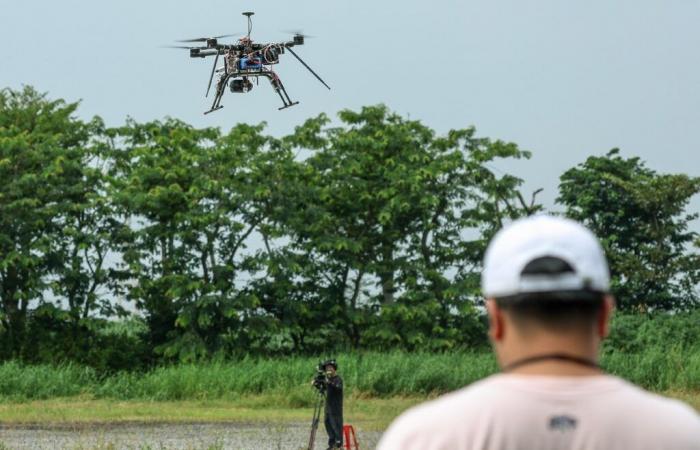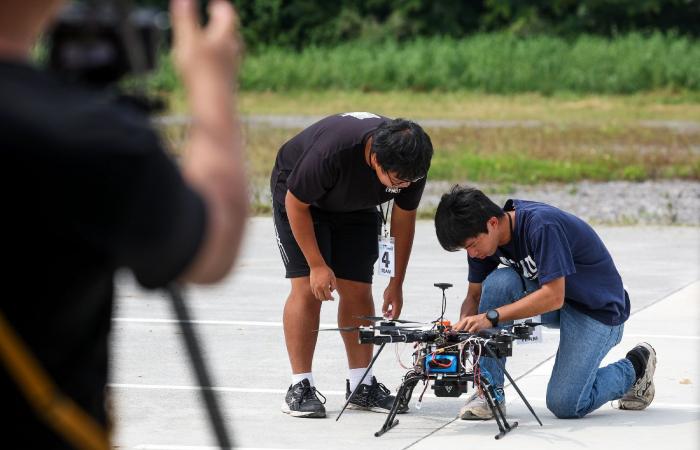Coming from all over Taiwan, these students are participating in a competition intended to stimulate the Taiwanese drone industry.
China, which claims Taiwan as its own territory, is exerting strong military pressure on the island, pushing Taipei to increase investments in this sector in order to equip itself with a more agile defense against a possible Chinese attack.
“We can see drones in many modern conflicts,” points out competition organizer Jan Shau-shiun, a professor at the Department of Space Systems Engineering at National Cheng Kung University.
Ukraine and Russia use large numbers of drones for surveillance and targeted strikes, far behind the front lines.
“Taiwan is in a situation where we could also face such a problem, which is why we aim to strengthen our drone capabilities,” adds Professor Jan.
Models participating in the National Defense Application UAV Challenge launched last year can be adopted by drone companies and purchased by the government.
The second edition of the competition was held in October for two days at the Asia UAV AI Innovation Application R&D Center in Chiayi County.
A total of 20 teams gathered to test their drones. In November, selected candidates will be able to compete again before the winner is declared next year.
In the competition, multirotor or fixed-wing drones had to fly autonomously to a height of at least 60 meters, take images of a distant target and return to base within 10 minutes.
But this year, in order to make the scenario more realistic and demanding, the organizers used a jammer to disrupt the satellite signals sent to the drones, making them more difficult to fly.
“By observing the war in Ukraine and other conflicts, we can see that there is often interference on GNSS (global navigation satellite systems) before the fighting,” continues Mr. Jan.
– “Practical skills” –
After spending many hours designing and building their drones, with the help of local specialist companies, the teams nervously watched as their devices took flight.
Cheng Yong-jen breathed a sigh of relief as the drone he helped design rose, flew away and returned safely, while others crashed.
Previously, “it crashed, we fixed it, it crashed again and we fixed it again,” said the 24-year-old student, who graduated from the National University of Formosa.
“When the drone finally landed, I was in tears.”
Lin Chun-liang, a judge and professor of electrical engineering at National Chung Hsing University, said the competition helps students develop “practical skills” not taught in school.
Taiwan is spending hundreds of millions of dollars not only to purchase and develop drones, but also to train talent to work in the sector in the future, as it strives to improve its military capabilities.
President Lai Ching-te has pledged to make Taiwan “the hub of drone supply chains in Asia.”
Retaining employees in this industry, however, is difficult in Taiwan where the huge semiconductor sector offers more attractive salaries.
“This is the path we must take,” insists Cheng Yong-jen, who says he wants to join a drone company after his master’s degree specializing in defense drones.
“We cannot stop progressing just because we are behind others,” concludes the young man.







